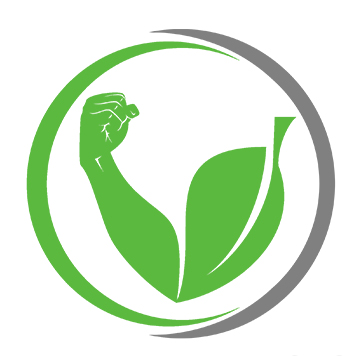
"The Complete Protein Myth" Busted
If we think those on a plant-based diet need to eat copious amounts of rice and beans to get “complete” proteins, we must think again. Covering our essential amino acids from such a diet is easier than we think.
The widely held belief that plant-based proteins are “incomplete” or “missing” amino acids is a common misconception. It’s clear that a few crucial truths have been overlooked based on two basic tenets of biology: plants use the same 20 amino acids as humans to build their proteins (the genetic code is universal), and all animals ultimately get their protein from plants (or plant-like phytoplankton) either directly or indirectly through the food chain.
Proteins, in short, are biochemical molecules that contain chains of amino acids. They can help repair and create tissue (including muscle), are used to make hormones and enzymes, and are building blocks for everything from cartilage and bones to hair and nails. Because our bodies use protein in so many ways, getting enough through our diets is essential for overall health. But not all proteins contain the same amino acid structure, which is why we’ve heard about “complete” and “incomplete” proteins.

Proteins are composed of 20 amino acids, and each is defined by its unique sequence of these acids. Eleven are produced by the human body, and are alanine, arginine, asparagine, aspartic acid, cysteine, glutamic acid, glutamine, glycine, proline, serine, and tyrosine.
For good health, we must get the other nine essential amino acids from the foods we eat. These include leucine, histidine, isoleucine, phenylalanine, lysine, methionine, tryptophan, threonine and valine. When a food contains all nine of these amino acids, it’s considered a “complete” protein.
The idea that those following a plant-based diet need to meticulously plan each meal to combine amino acids is a myth, and has been dispelled by the nutrition community years ago. While some plants are admittedly low in certain amino acids, there is no need to eat complementary proteins together at every meal. The human body is extremely intelligent, and maintains pools of free amino acids by complementing the food we eat. It then effectively recycles protein by putting back around 90 grams into our digestive tract every day to be broken down and reassembled. This means that our body can easily mix and match amino acids to whatever proportions we need. The only reason animal products have “complete” amino acid profiles is because the animal had already done this themselves.
Plant Foods With High Protein
There’s an array of plant foods high in protein, but a few stand out with higher levels of essential amino acids:
- Quinoa
- Amaranth
- Buckwheat
- Ezekiel bread
- Soy (edamame, tempeh, tofu)
- Hemp
- Chia seed
- Nutritional yeast
- Spirulina
Additionally, simple combinations of plant foods can create complete protein sources:
- Whole grain pita bread and hummus
- Peanut butter on whole grain toast
- Spinach salad with nut and seed toppings
- Steel-cut oatmeal with pumpkin seeds or peanut butter
- Lentil soup with whole grain slice of bread

Luckily, Vedge Plant Protein offers a complete amino acid profile, including organic pea, organic sunflower seed, and organic pumpkin seed protein. The amino acid leucine has been shown in clinical studies to increase muscle protein synthesis, which is why we use peas as our main base.
Whether we’re looking to build muscle, burn fat, or simply cook healthier meals, plant sources can provide all the protein our bodies need. Getting our protein from plants means we’ll be eating more vegetables, whole grains, nuts and seeds - all of which have been linked to the health of our hearts, brain and gut microbiome. As long as we eat enough total plant-based protein and incorporate some diversity in our sources, we should be covering our essential amino acids. We don’t have to eat endless servings of rice and beans - unless we want to...
Subscribe to see more!
Love this content?
Receive our awesome newsletter straight to your Inbox!

 Your email address will always stay private.
Your email address will always stay private.
